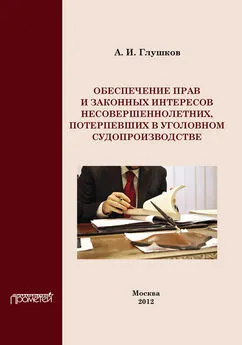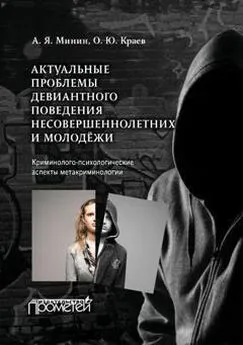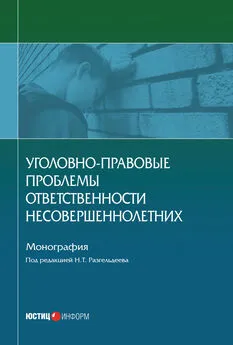Judith Levine - Вредно для несовершеннолетних
- Название:Вредно для несовершеннолетних
- Автор:
- Жанр:
- Издательство:неизвестно
- Год:неизвестен
- ISBN:нет данных
- Рейтинг:
- Избранное:Добавить в избранное
-
Отзывы:
-
Ваша оценка:
Judith Levine - Вредно для несовершеннолетних краткое содержание
Вредно для несовершеннолетних - читать онлайн бесплатно полную версию (весь текст целиком)
Интервал:
Закладка:
9. Robert Pear, "Provision on Youth Health Insurance Would Sharply Limit Access to Abortion," New York Times , July 3, 1997.
10. About twenty-six million have legal abortions yearly, and an estimated twenty million have illegal ones, ending about half of all unplanned pregnancies. Alan Guttmacher Institute News , January 21, 1999.
11. Estimated rates ran from one in ten to almost one in two, and among Kinsey's unmarried informants, 90 percent of those who got pregnant procured abortions. Lawrence Lader, Abortion (New York: Bobbs-Merrill, 1966), 64-74; Kristin Luker, Abortion and the Politics of Motherhood (Berkeley: University of California Press, 1984), 48-49; Brett Harvey, The Fifties: A Women's Oral History (New York: Harper Collins, 1993), 24.
12. "Abortion Common among All Women Even Those Thought to Oppose Abortion," Alan Guttmacher Institute press release, 1996.
13. Cronin, "Abortion: The Rate vs. the Debate."
14. In a New York Times-CBS poll in 1998, half of respondents thought abortion was too easy to get; as compared with 1989, fewer people felt that an interrupted career or education was an acceptable reason to get an abortion; and only 15 percent believed abortion was acceptable in the second trimester. "[P]ublic opinion has shifted notably away from general acceptance of legal abortion and toward an evolving center of gravity: a more nuanced, conditional acceptance that some call a 'permit but discourage' model." Carey Goldberg with Janet Elder, "Public Still Backs Abortion, but Wants Limits, Poll Says," New York Times , January 16, 1998, A1.
15. Jennifer Baumgartner, "The Pro-Choice PR Problem," Nation (March 5, 2001): 19-23.
16. Naomi Wolf, "Our Bodies, Our Souls: Rethinking Pro-Choice Rhetoric," New Republic (October 16, 1995): 26-27.
17. Janet Hadley, "The 'Awfulisation' of Abortion," paper presented to the Abortion Matters conference, Amsterdam, March 1996.
18. "Abortion Common . . . ," Guttmacher Institute.
19. Nation columnist Katha Pollitt is one of the few who has defended the morality of abortion.
20. See, for example, Vincent M. Rue, "The Psychological Realities of Induced Abortion," in Post-Abortion Aftermath: A Comprehensive Consideration , ed. Michael T. Mannion (Franklin, Wis.: Sheed and Ward, 1994). The antichoice group Operation Rescue has widely distributed Focus on the Family's pamphlet Identifying and Overcoming Post-Abortion Syndrome , by Teri K. and Paul C. Reisser (Colorado Springs: Focus on the Family, revised 1994).
21. "Abortion Study Finds No Long-Term Ill Effects on Emotional Well-Being," Family Planning Perspectives 29 (July/August 1997): 193; Jane E. Brody, "Study Disputes Abortion Trauma," New York Times , February 12, 1997, C8.
22. "Researchers Document Flaw in Research Linking Abortion and Breast Cancer," Reproductive Freedom News 20 (December 20, 1996), quoting Journal of the National Cancer Institute (December 4, 1996).
23. Rebecca Stone and Cynthia Waszak, "Adolescent Knowledge and Attitudes about Abortion," Family Planning Perspectives 24 (Narcg 1992): 53.
24. Stone and Waszak, "Adolescent Knowledge and Attitudes."
25. Connecticut, Michigan, and Rhode Island, to name three, forbade discussion of abortion as a reproductive health method; South Carolina allowed discussion of the procedure but only its negative consequences. "Sexuality Education in America: A State-by-State Review," National Abortion Rights Action League report, Washington, D.C., 1995. Under the federal abstinence-only regulations, of course, abortion may not be mentioned.
26. Sex Respect Student Workbook , 95.
27. On the tonsillectomy comparison, see "Safety of Abortion," National Abortion Rights Action League fact sheet, Washington, D.C., undated, received 1998; and Review of Fear-Based Programs , SIECUS Community Action Kit, 1994: 6. On the shot of penicillin comparison, see Margie Kelly, "Legalized Abortion: A Public Health Success Story," Reproductive Freedom News (June 1999): 7.
28. Girls Incorporated, Taking Care of Business: A Sexuality Education Program for Young Teen Women Ages 15-18 (Indianapolis: Girls Inc., 1998), vol. 6, 1-6.
29. Sex Can Wait (Santa Cruz, Calif.: ETR Associates, 1998), 290.
30. Peggy Brick and Bill Taverner, The New Positive Images: Teaching Abstinence, Contraception and Sexual Health , 3d ed. (Morristown, N.J.: Planned Parenthood of Greater Northern New Jersey, 2001).
31. After reading the curricula used in public schools, I find it a relief and inspiration to peruse the Unitarian Universalist Church's Our Whole Lives . Its curricula both for seventh- to ninth-graders and for older high schoolers present thorough discussions of the values debate around abortion, as well as explicit descriptions of the procedures and clear statements of abortion's safety. The tenth- to twelfth-grade text titles the section on abortion "Reproductive Rights." Pamela M. Wilson, Our Whole Lives: Sexuality Education for Grades 7 to 9 (Boston: Unitarian Universalist Association/United Church Board for Homeland Ministries, 1999); Eva S. Goldfarb and Elizabeth M. Casparian, Our Whole Lives: Sexuality Education for Grades 10 to 12 (Boston: Unitarian Universalist Association/United Church Board for Homeland Ministries, 1999), 199-212.
32. Alan Guttmacher Institute, "Teenage Pregnancy and the Welfare Reform Debate," Issues in Brief (Washington, D.C.: the institute, 1995).
33. Hector Sanchez-Flores, speaking at the Adolescent Sexual Health: New Data and Implications for Services and Programs conference, sponsored by Planned Parenthood of New York City and other organizations, October 26, 1998.
34. On metropolitan areas, see Barbara Vobejda, "Study Finds Fewer Facilities Offering Abortions," Washington Post , December 11, 1998, A4.
35. The Defense Department also prohibited both federally and privately funded abortions at military facilities. Cronin, "Abortion: The Rate vs. the Debate."
36. National Abortion Rights Action League, 1998 statistics (accessed on www.naral.org), Washington, D.C.
37. Margaret C. Crosby and Abigail English, "Should Parental Consent to or Notification of an Adolescent's Abortion Be Required by Law? No"; and Everett L. Worthington, "Should Parental Consent . . . ? Yes"; both in Debating Children's Lives: Current Controversies on Children and Adolescents , ed. Mary Ann Mason and Eileen Gambrill (Thousand Oaks, Calif.: Sage Publications, 1994), 143 and 133, respectively.
38. Crosby and English, "Should Parental Consent . . . ? No," 143.
39. Court approval by "judicial bypass," the legal remedy to the discriminatory burden such regulations place on girls who can't talk to their families, may even discourage such conversations. Crosby and English, "Should Parental Consent . . . ? No."
40. "Induced Termination of Pregnancy before and after Roe v. Wade , Trends in the Mortality and Morbidity of Women," Journal of the American Medical Association 268, no. 22 (December 1993): 3238.
41. American Medical Association, Council on Ethical and Judicial Affairs, "Mandatory Parental Consent to Abortion," Journal of the American Medical Association 269, no. 1 (January 6, 1993): 83.
42. Lizette Alvarez, "GOP Bill to Back Parental Consent Abortion Laws," New York Times , May 21, 1998, A30. The datum that young women support parental involvement laws was gleaned from a nationwide study of teens and young adult women, but since this fact did not support the political aims of the group that conducted the study, the group's board of directors has chosen not to publicize it.
43. "Woman Is Sentenced for Aid in Abortion," New York Times , December 17, 1996.
44. "Debate Continues on Child Custody Protection Act," Reproductive Freedom News 7, no. 5 (June 1, 1998): 3-4; "Women's Stories: Becky Bell," National Abortion Rights Action League report, Washington, D.C., undated.
45. Alvarez, "GOP Bill."
46. The bill was reintroduced in 2001. At this writing, it has not been voted on.
47. Tamar Lewin, "Poll of Teenagers: Battle of the Sexes on Roles in Family," New York Times , July 11, 1994, A1.
48. Addressing this atavistic social problem, lawmakers in two dozen states have proposed granting money to women who dispose of unwanted infants, as long as the babies are still breathing and the mothers leave them in an authorized location, such as a hospital. Currently, many states prosecute mothers who abandon their newborns. Jacqueline L. Salmon, "For Unwanted Babies, a Safety Net," Washington Post , October 20, 2000.
7. The Expurgation of Pleasure
1. Peggy Brick, "Toward a Positive Approach to Adolescent Sexuality," SIECUS Report 17 (May-June 1989): 3.
2. Guidelines for Comprehensive Sexuality Education , 1.
3. Michelle Fine, "Sexuality, Schooling, and Adolescent Females: The Missing Discourse of Desire," Harvard Educational Review 58 (1988): 33.
4. Girls Incorporated, Will Power/Won't Power: A Sexuality Education Program for Girls Ages 12-14 (Indianapolis: Girls Inc., 1998), V-12.
5. Richard P. Barth, Reducing the Risk: Building Skills to Prevent Pregnancy, STD, and HIV , 3d ed. (Santa Cruz, Calif.: ETR Associates, 1996), 89.
6. Tim LaHaye and Beverly LaHaye, The Act of Marriage: The Beauty of Sexual Love (Grand Rapids, Mich.: Zondervan, 1976), 289-90.
7. This was the definition given by the majority in Stephanie A. Sanders and June Machover Reinisch's "Would You Say You 'Had Sex' If . . . ?" Journal of the American Medical Association 281 (January 20, 1999): 275-77. See also Lisa Remez, "Oral Sex among Adolescents: Is It Sex or Is It Abstinence?" Alan Guttmacher Institute, Special Report 32, November-December 2000.
8. Mary M. Krueger, "Everyone Is an Exception: Assumptions to Avoid in the Sex Education Classroom," Family Life Educator (fall 1993).
9. Cindy Patton, Fatal Advice: How Safe-Sex Education Went Wrong (Durham, N.C.: Duke University Press, 1996), 34.
10. The National Survey of Adolescent Males Ages 15 to 19, conducted in 1995 and published in 2000, found that one in ten had experienced anal sex. Tamar Lewin, "Survey Shows Sex Practices of Boys," New York Times , December 19, 2000. In one San Francisco survey of seventeen- to nineteen-year-old men who have sex with men, 28 percent had had unprotected anal sex, the behavior carrying the highest risk for HIV transmission. U.S. Conference of Mayors, "Safer Sex Relapse: A Contemporary Challenge," AIDS Information Exchange 11, no. 4 (1994): 1-8.
11. On the masturbation datum, see Krueger, "Everyone Is an Exception." On the oral sex datum, see Susan Newcomer and J. Richard Udry, "Oral Sex in an Adolescent Population," Archives of Sexual Behavior 14 (1985): 41-46. In another survey, of more than two thousand Los Angeles high school "virgins" in 1996, about a third of both boys and girls had masturbated or been masturbated by a heterosexual partner; about a tenth had engaged in fellatio to ejaculation or cunnilingus, with boys and girls more or less equally on the receiving end. Homosexual behavior was rarely reported among these kids, but 1 percent reported heterosexual anal intercourse. Mark A. Schuster, Robert M. Bell, and David E. Kanouse, "The Sexual Practices of Adolescent Virgins: Genital Sexual Activities of High School Students Who Have Never Had Vaginal Intercourse," American Journal of Public Health 86 (1996): 1570-76. Remez ("Sex among Adolescents") provides a good review of the scant literature on noncoital adolescent sexual behavior. She also suggests that the incidence and prevalence of fellatio probably far outweigh cunnilingus among teens. Many teens who have had oral sex have not had vaginal intercourse. One of Remez's sources guesses that "for around 25 percent of the kids who have had any kind of intimate sexual activity, that activity is oral sex, not intercourse."
Читать дальшеИнтервал:
Закладка:










